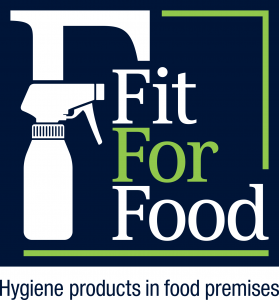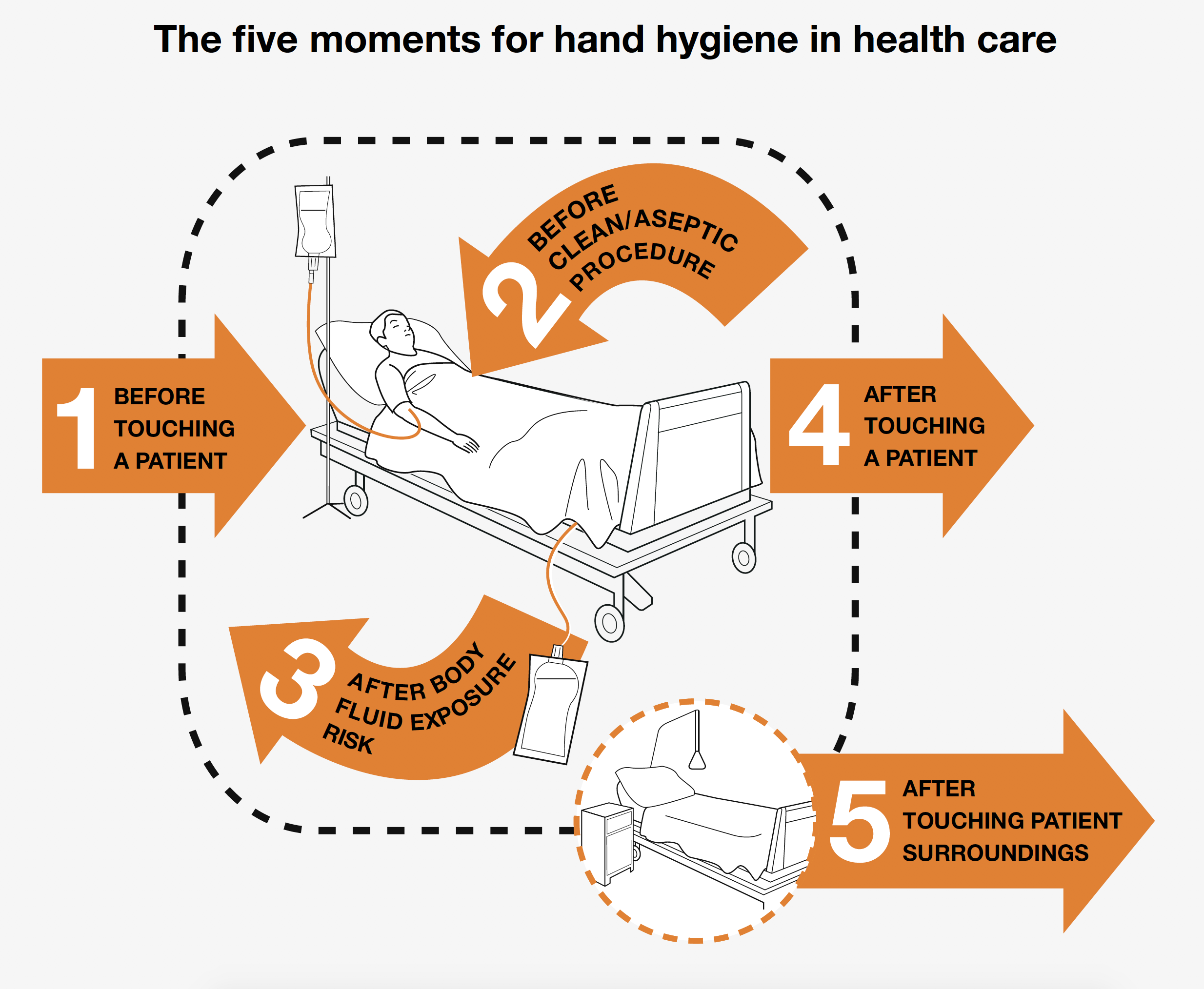Many areas of production and industry rely on good hygiene practices to ensure product quality and safety.
Hygiene practices that are employed in industrial settings, including manufacturing and agriculture, maintain clean, sanitary environments and ultimately protect public health.
(Hygiene in industrial settings should not be confused with the specific science called ‘industrial hygiene’, or ‘occupational hygiene’, which is ‘the discipline of anticipating, recognizing, evaluating, and controlling health hazards in the working environment with the objective of protecting worker health and well-being and safeguarding the community at large’.) [i]
HYGIENE IN INDUSTRY
Hygiene in general manufacturing
Why?
Hygiene in manufacturing is vital for protecting public health and wellbeing, as well as ensuring product quality.
Manufacturing hygiene aims to prevent product contamination that may occur through the introduction of unwanted materials, substances or microorganisms into a manufactured good or process. Good hygiene practices reduce the likelihood of the introduction, spread and multiplication of potential pathogens and other spoilage organisms in the manufacturing environment. This protects the health of consumers as they use manufactured products, as well as the health of industrial workers.
Hygiene in manufacturing is vital, since a contaminated production batch has the potential to affect the health of many people, or to result in spoilage and waste. Obviously, different industry sectors also have different hygiene requirements depending on the nature of the products being manufactured. For example, hygiene is of paramount importance in food, beverage and pharmaceuticals production where products are ingested or applied directly to the body. Hygiene is less important in the automobile and building industries.
How?
Manufacturing usually includes several stages – production, packaging, storage and distribution. There is also quality control testing which checks that the finished product meets all required specifications and is of suitable quality for release.
These different stages have different hygiene requirements, so appropriate procedures need to be established, documented and monitored for each stage. However, there are two main areas of manufacturing hygiene that can be focussed on across these stages:
Hand washing
- Hand washing facilities, procedures and quality hand washing products
Protective equipment
- Appropriate protective equipment e.g. clothing, gloves, mask, goggles and helmet
- Protective clothing changed into and laundered on-site
Medical
- Medical examination, if required e.g. to ensure personnel pose no health risk, or to check ability to perform required tasks
- Precautions to be taken in cases of infectious illness or skin lesions
Practices
- No eating, drinking or smoking in production, packaging or storage areas
Most importantly – personnel need to understand and adhere to the requirements
Cleaning and sanitising
- Procedures specifying frequency and requirements for cleaning & disinfection of different areas, equipment and containers
- Effective products and instructions for their dilution, application and contact time
Waste management
- Waste management procedures, with suitable containment and regular disposal
Pest control
- Procedures that minimise pest entry or remove pests from premises
Organisation
- Procedures for quarantine and storage, dispensing, quality control testing and labelling of materials
- Procedures to minimise cross contamination in production, e.g. dust control, segregation and lids
Monitoring
- Procedures to monitor/audit the effectiveness of hygiene operations
- Procedures to monitor conditions for production and storage e.g. temperature, humidity & ventilation
Maintenance
- Regular maintenance, repair and replacement of equipment
Most importantly – all operations must follow documented procedures
HYGIENE IN INDUSTRY
Hygiene in food and beverage manufacturing
Why?
Hygiene in food and beverage production ensures that food and beverage products are fit for human consumption.
This means that food and beverages are free from levels of hazardous contaminants that could present an unacceptable risk to human health. These include:
- Microorganisms, including bacteria, viruses, parasites and moulds
- Toxins or metabolites produced by microorganisms
- Chemical residues e.g. from cleaning and sanitising agents, agricultural chemicals and veterinary drugs
- Physical foreign matter
The vast majority of foodborne illness is caused by pathogenic microorganisms. The effects of foodborne illness can range from unpleasant to fatal. Hygiene in food and beverage production aims to prevent the introduction of contaminants, and the spread and multiplication of microorganisms during the production process.
Food hygiene also helps prevent food spoilage, thus protecting against wastage and negative economic consequences.
How?
Because of the vital importance of hygiene in food and beverage production, it is not good enough to leave the effectiveness of food safety measures to chance. Rather, it is necessary that a system of identifying and controlling potential food safety hazards in food production be established.
The Hazard Analysis Critical Control Points system (HACCP) is one widely adopted risk management methodology for the identification and control of food safety hazards. The core elements of HACCP are also embodied in the Australia New Zealand Food Standard 3.2.1 – Food Safety Programs, and include:
- Identification of potential hazards
- Identification of steps that are critical for hazard control
- Implementation of control procedures for these steps
- Systematic monitoring of control implementation and effectiveness
- Review of control procedures
- Record keeping
 The FitForFood website has more information on hygiene in food premises, and specifically on how to know which cleaning and hygiene products are suitable.
The FitForFood website has more information on hygiene in food premises, and specifically on how to know which cleaning and hygiene products are suitable.
Some examples of hygienic practices in food and beverage production include:
All production, storage and transport equipment is easy to clean and disinfect, without itself being damaged by the cleaning/disinfection procedure
Schedules for maintenance and calibration are established
All workers and visitors follow hygiene procedures e.g.
- handwashing
- disclosing medical conditions that could compromise food safety
- minimising contact with ready-to-eat food
- wearing appropriate protective clothing and equipment
- not eating, spitting, sneezing, blowing or coughing over foodstuffs or food contact surfaces
Suppliers provide documentation to demonstrate the quality of all inputs
Procedures are in place to maintain sanitary conditions during production e.g.
- cleaning & sanitising using effective products and correct application
- disinfecting after contact with raw foods especially meat and poultry
- preventing foreign contaminants including dust, fumes, glass or metal shards and chemicals
- ensuring water quality
- controlling temperature as appropriate for the type of food, its intended shelf life, its processing and packaging, and how the product is intended to be consumed
Documentation is produced to demonstrate sanitary conditions
Procedures are in place to control and monitor pests e.g.
- preventing access
- employing suitable chemical, physical or biological eradication agents
Procedures are in place to ensure all foodstuffs are hygienically stored and shipped e.g.
- segregation of waste, non-foodstuffs such as cleaning chemicals, foodstuffs unfit for human consumption, and raw vs ready-to-eat foods
- controlling temperature during transport
- coding each batch
Systems enabling rapid recall of batches are in place
Information is provided to the next in the food chain to enable hygienic handling, storage or processing of the product
HYGIENE IN INDUSTRY
Hygiene in agriculture
Why?
Agricultural hygiene helps protect livestock and crops from pests and disease, including insects, parasites, pathogens and weeds.
Optimising the health of animals and crops increases productivity, minimises animal suffering, and ultimately protects human health by ensuring that foodstuffs are safe for consumption. A healthy farm environment also protects the health of agricultural workers.
Pathogens are ubiquitous in farm environments. However, additional pathogens and pests can be introduced to farm environments e.g. via movement of vehicles, people and stock onto the property, or via the farm’s water supply. Insects and other pests also “invade” without assistance.
Cross-contamination of pathogens and pests can also occur within the farm environment via movement of vehicles, people and stock around the property, or via contact with contaminated equipment, machinery and structures.
Therefore, agricultural hygiene aims to minimise the introduction and spread of pathogens and pests in farm environments. This helps protect the safety of foodstuffs further down the supply chain.
Did you know?[ii]
A cow produces (on average) 6,070 litres of milk each year
Australians consume (on average) 102.9 litres of milk and 13.6 kg of cheese each year
Cheese is the main product from Australian milk, followed by drinking milk
How?
The key to agricultural hygiene is effective risk management and constant improvement of hygiene standards at each level of the agricultural process and as agricultural products move further along the food chain. Effective cleaning, disinfecting and pest control regimes are integral, as summarised in the popup below.
Cleaning and disinfection with good quality, effective products is integral to maintaining a healthy farm environment. Some of the specialised products for farm environments include powerful degreasers for cleaning organic material from equipment, vehicles, machinery, and buildings; descalers to remove inorganic build-up on machinery and equipment; wetting agents, minimising water use to dislodge dried matter such as manure; hand washes, with or without antimicrobial properties; heavy-duty laundry detergents; and disinfectants, including water treatments.
Also essential to agricultural hygiene is effective pest control, which includes chemical, biological and physical methods to protect animals, crops and pasture from different types of pests. Examples of chemical pesticides are those used to protect livestock from parasites, such as lice, ticks, mites and worms; as well as insecticides, fungicides, molluscicides, rodenticides and herbicides to protect crops and pasture from insects, fungus, snails, rats and mice, and weeds, respectively.
All veterinary and pesticide products in Australia are subject to a registration process overseen by the Australian Pesticides and Veterinary Medicines Authority (APVMA). Products must meet criteria in the areas of public health, food safety, occupational health & safety and environment, as well as criteria ensuring products are fit for their intended purpose. The usage of these products is regulated by each of the states and territories. Take a look at the Australian Code of Good Manufacturing Practice for Veterinary Chemical Products.
[i] International Occupational Hygiene Association, What is Occupational Hygiene?
[ii] Dairy Australia, 2017/18, The Australian dairy industry at a glance 2017-18.

